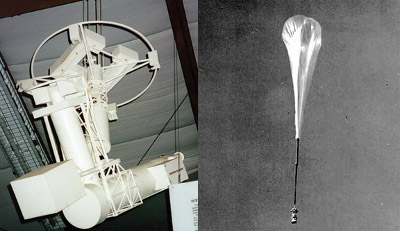When I was still in Washington, D.C. towards the end of the war in 1946, a friend told me about a new organization the Air Force had set up to do top secret research called the RAND Project. At the time, RAND was designing a satellite to orbit the Earth and my friend asked me if I would be interested in writing a chapter for the study on the possible astronomical uses of such a space satellite. With my long and ardent background in science fiction, I found this invitation an exciting one and accepted with great enthusiasm. My paper for them outlined a space telescope that could be used for scientific research. I included sixteen areas of possible research. Many of them could not be studied at all from the Earth and others only to a limited extent.
No satellite resulted directly from my report and many scientists were skeptical, but I didn’t give up. My analysis convinced me that a large, general-use optical telescope in space would be of paramount importance to the scientific community. In the following years I would talk to fellow astronomers encouraging them to think about this new approach to astronomy.
This report would be the beginning of the long journey to the launching of the Hubble Space Telescope. I was essentially involved with that telescope for over fifty years. I looked back in 1990 and was surprised how well the research capabilities of the Hubble aligned with my recommendations in the RAND report.
Project Stratoscope: On the left is a model of the Stratoscope telescope from the Smithsonian's National Air and Space Museum. The telescope is the long, tubular, nearly horizontal structure at the bottom. It is attached to various pieces of electronics auxillary equipment necessary for pointing the telescope exactly when there is not a stable paltform such as the surface of the Earth. On the right is the balloon launch of the instrument.
Credit: Smithsonian NASM; U.S. Navy; Princeton University
It would be several years after the RAND report before my fascination with space-based astronomy led to any real research. In the 1950s my colleague at Princeton, Martin Schwarzschild, began a balloon astronomy program, Project Stratoscope, which produced sharp stellar images from 80,000 feet above the Earth's surface. At the time, I was convinced that this was the first step toward a large space telescope: it was necesssary to prove that we really could prove that we could get sharp images if we moved above the turbulent layers of the atmosphere. I therefore encouraged and supported him in any way that I could by mustering financial support and suggesting effects that the unfamiliar environment, 80,000 feet above the Earth's surface, might have on the various items of telescope equipment. Coincidentally, the first Earth-orbiting satellite was launched into space the same year, 1957, that the Stratoscope took its first images.


